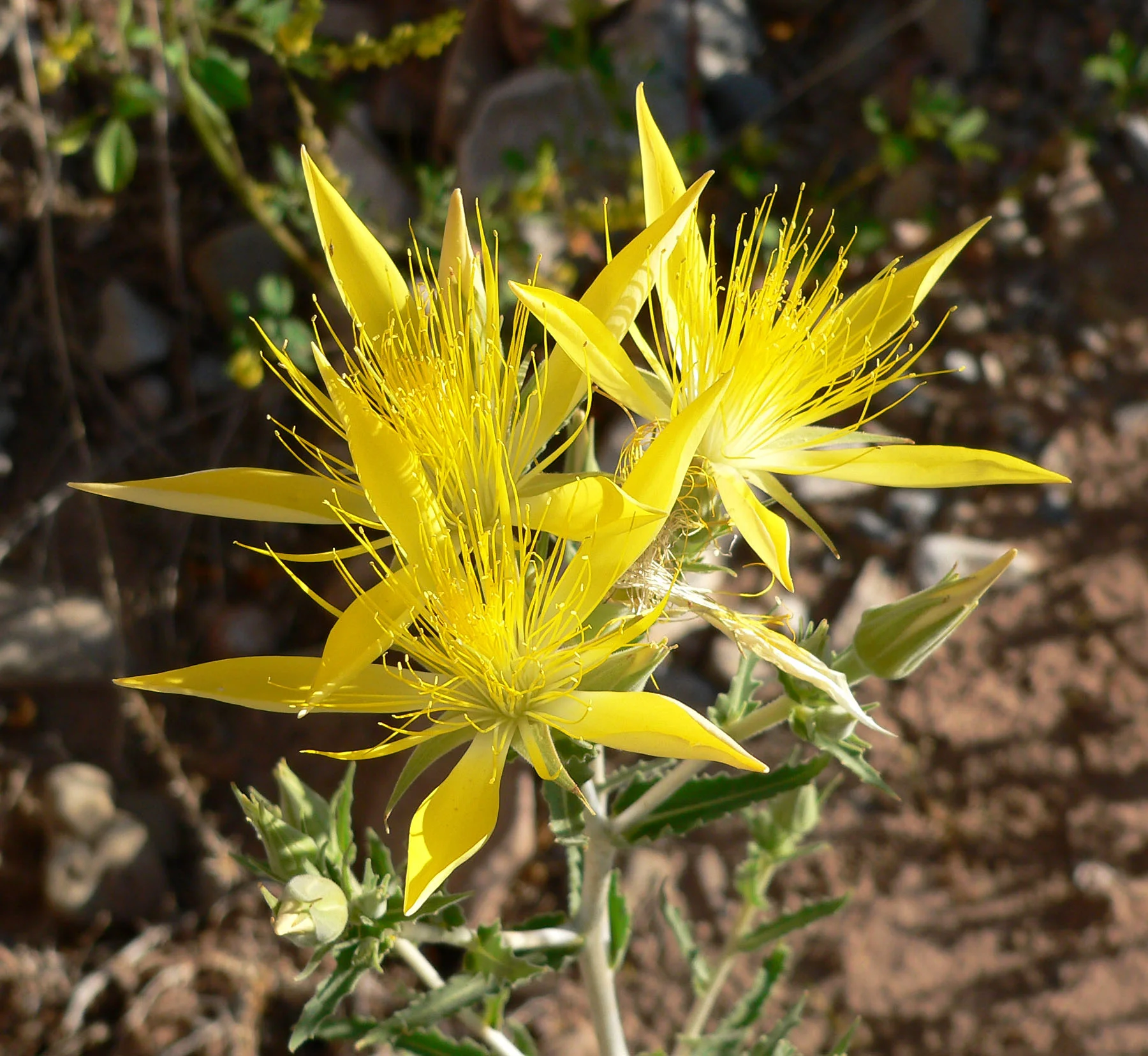Photo by Stan Shebs licensed under CC BY-SA 3.0
Plants living on islands face a bit of a conundrum. In order to get to said islands, the ancestors of those plants had to exhibit extreme seed or spore dispersal strategies. However, if plants are to persist after arriving to an island, long-distance dispersal becomes rather risky. In the case of oceanic islands, seeds or spores that travel too far end up in the water. As such, we often observe an evolutionary reduction in dispersal ability for island residents.
Islands, however, are not always surrounded by water. You can have "islands" on land as well. The easiest example for most to picture would be the alpine zone of a mountain. Species adapted to these high-elevation habitats find it hard to compete with species native to low-elevation habitats and are therefore stuck on these "islands in the sky." Less obvious are islands created by a specific soil type.
Take, for instance, gypseous soils. Such soils are the result of large amounts of gypsum deposits at or near the soil surface. Gypseous soils are found in large quantities throughout parts of western North America, North and South Africa, western Asia, Australia, and eastern Spain. They are largely the result of a massive climatic shift that occurred during the Eocene, some 50 million years ago.
Licensed under public domain
Massive mountain building events during that time were causing large reductions in atmospheric CO2 concentrations. The removal of this greenhouse gas via chemical weathering caused a gradual decline in average temperatures around the world. Earth was also becoming a much drier place and throughout the areas mentioned above, hyper-saline lakes began to dry up. As they did, copious amount of minerals, including gypsum, were left behind.
These mineral-rich soils differ from the surrounding soils in that they contain a lot of salts. Salt makes life incredibly difficult for most terrestrial plants. Life finds a way, however, and a handful of plant species inevitably adapted to these mineral-rich soils, becoming specialists in the process. They are so specialized on these types of soils that they simply cannot compete with other plant species when growing in more "normal" soils.
Essentially, these gypseous soils function like soil or edaphic islands. Plants specialized in growing there really don't have the option to disperse far and wide. They have to rein it in or risk extirpation. For a group of plants growing in gypseous soils in western North America, this equates to changes in seed morphology.
Mentzelia is a genus of flowering plants in the family Loasaceae. There are somewhere around 60 to 70 different species, ranging from annuals to perennials, and forbs to shrubs (they are often referred to as blazing stars but since that would lead to too much confusion with Liatris, I will continue to refer to them as Mentzelia).
For most species in this genus, seed dispersal is accomplished by wind. Plants growing on "normal" soils produce seeds with a distinct wing surrounding the seed. A decent breeze will dislodge them from their capsule, causing them blow around. With any luck some of those seeds will land in a suitable spot for germination, far from their parents. Such is not the case for all Mentzelia though. When researchers took a closer look at species that have specialized on gypseous soils, they found something intriguing.
Mentzelia phylogeny showing reduction in seed wings. [source]
The wings surrounding the seeds of gypseous Mentzelia were either extremely reduced in size or had disappeared altogether. Just as it makes no sense for a plant living on an oceanic island to disperse its seeds far out into the ocean, it too makes no sense for gypseous Mentzelia to disperse their seeds into soils in which they cannot compete. It is thought that limited dispersal may help reinforce the types of habitat specialization that we see in species like these Mentzelia. The next question that must be answered is whether or not such specialization and limited dispersal comes at the cost of genetic diversity. More work will be needed to understand such dynamics.


![Mentzelia phylogeny showing reduction in seed wings. [source]](https://images.squarespace-cdn.com/content/v1/544591e6e4b0135285aeb5b6/1517881654366-84BORS8KUYHRY6IUK9DQ/ajb21811-fig-0002.png)